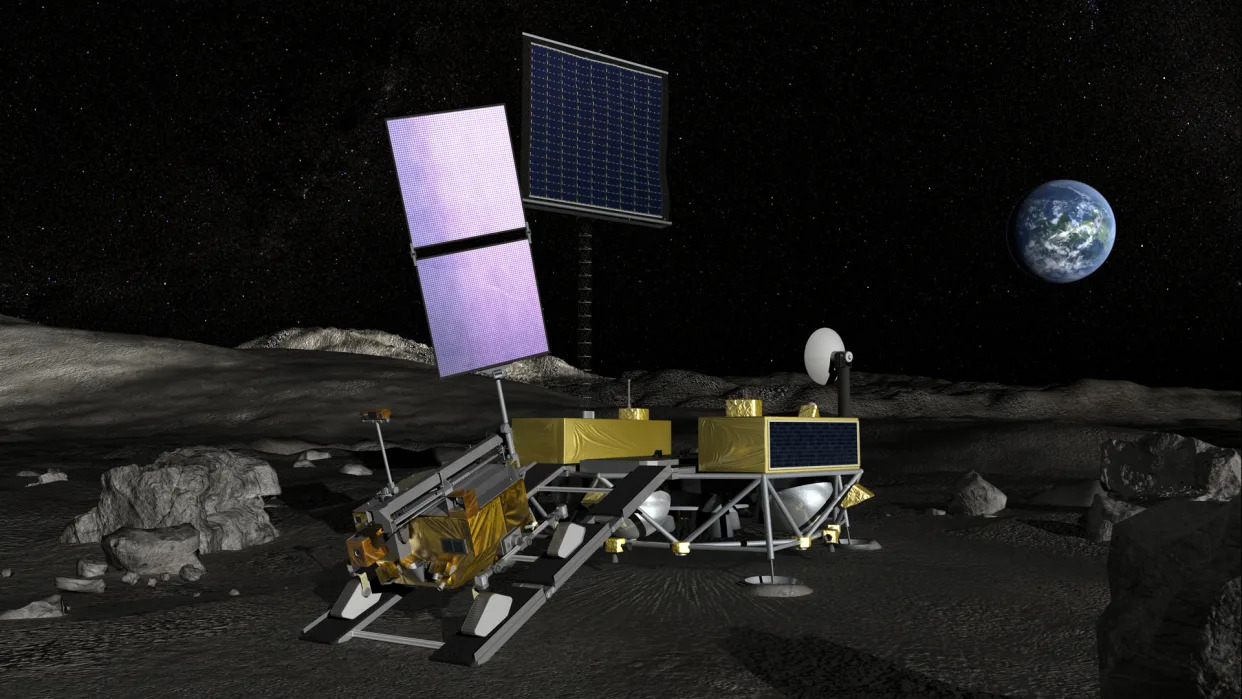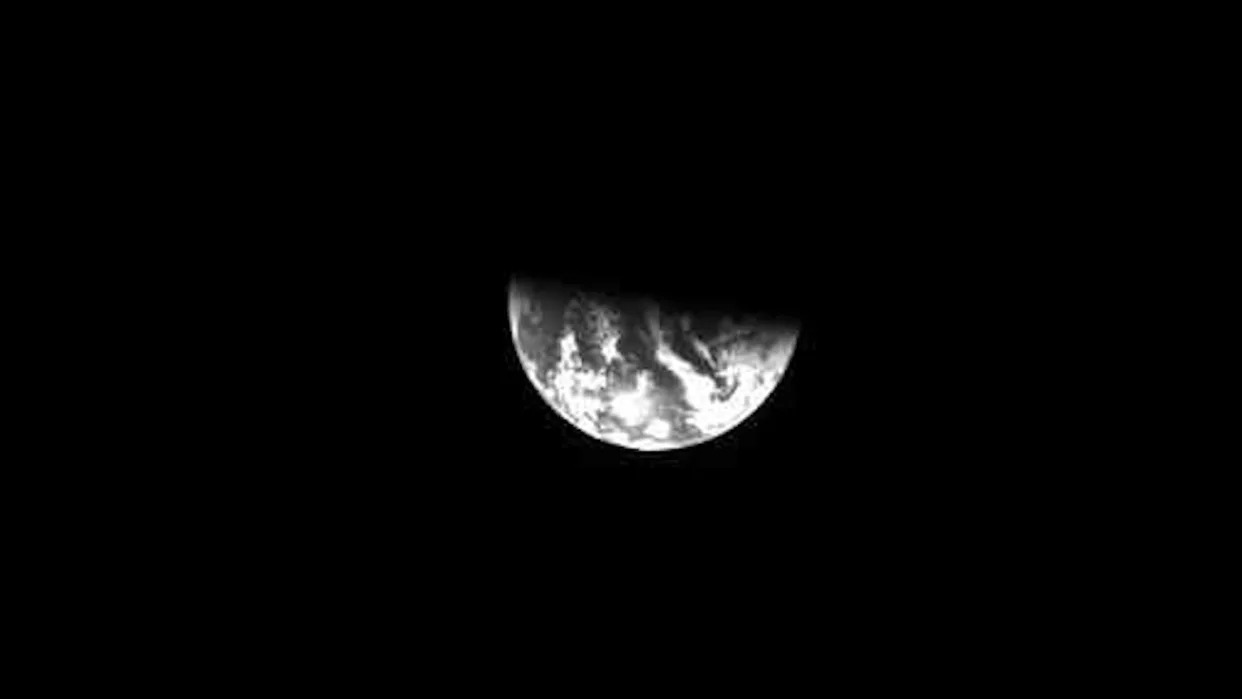AFP
Fri, September 29, 2023

The rover was powered down before the start of the two-week lunar night but efforts to wake it have so far been unsuccessful (-)
As hopes dim of further contact with India's Moon rover, the country's space chief has said he was satisfied with the prospect of calling its successful lunar mission to an end.
India began exploring the Moon's surface in August after becoming just the fourth nation to land a craft on the celestial body, sparking celebrations in a country rapidly closing in on milestones set by global space powers.
Rover Pragyan -- "Wisdom" in Sanskrit -- surveyed the vicinity of the Moon's south pole but was powered down before the start of lunar night, which lasts roughly two weeks on Earth.
The Indian Space Research Agency had hoped to prolong the mission by reactivating the solar-powered vehicle once daylight returned to the lunar surface, but so far has been greeted by radio silence.
"It is OK if it does not wake up because the rover has done what it was expected to do," ISRO chief S. Somanath told reporters late Wednesday, according to the Press Trust of India news agency.
ISRO said last week it had hoped to reestablish contact with the rover and the lander that safely delivered it.
"As of now, no signals have been received from them," it added.
The world's most populous nation has been steadily matching the achievements of established spacefaring powers at a fraction of their cost.
It has a comparatively low-budget space programme, but one that has grown considerably in size and momentum since first sending a probe to orbit the Moon in 2008.
Experts say India can keep costs low by copying and adapting existing technology, and thanks to an abundance of highly skilled engineers who earn a fraction of their foreign counterparts' wages.
India became the first Asian nation to put a craft into orbit around Mars in 2014 and is slated to launch a three-day crewed mission into the Earth's orbit by next year.
Earlier this month it launched a four-month mission towards the centre of the solar system to study phenomena on the surface of the Sun.
August's successful lunar mission came four years after its predecessor crashed on final descent, in what was seen at the time as a huge setback for its space programme.
Japan and India plan 2025 moon mission to hunt for water near the lunar south pole
Andrew Jones
Thu, September 28, 2023

Japan and India plan 2025 moon mission to hunt for water near the lunar south pole
The Japan Aerospace Exploration Agency (JAXA) Is making progress on its rover for a joint mission with India to the south pole of the moon.
JAXA and the Indian Space Research Organisation (ISRO) agreed to the cooperative project back in 2019. ISRO, which recently made India the fourth country to soft-land on the moon, will build the mission's lander, while JAXA will be responsible for the launch and a lunar rover.
The mission is slated to launch no earlier than 2025 on Japan's new H3 rocket, according to JAXA. The agency is meanwhile in the basic design phase of the rover with teams running tests in sand designed to simulate lunar regolith, the fine dust that covers the moon's surface. The tests will verify that the vehicle can perform its key science objectives on the moon.
Related: India tries waking up Chandrayaan-3 moon lander, without success (so far)
"The LUPEX project will investigate the quantity and quality of water on the moon. We hope to use this data as a basis for considering sustainable human activities on the moon in the future," Natsu Fujioka, who is part of the team developing the rover, said in a JAXA statement.
The rover will be autonomous and will drive to seek out water with its science payloads. It will also be able to drill into the lunar surface to collect samples which will then be analyzed by the rover's instruments. Each of these capabilities is a feat in itself, but combining these and within weight constraints, presents a serious task.
"It is a challenging project to transport a rover weighing several hundred kilograms loaded with these instruments to the moon, move it around, and measure the collected samples in situ," Fujioka said.
Other agencies will also be sending science payloads on the mission. NASA's Neutron Spectrometer will seek out hydrogen up to 3.3 feet (1 meter) below the surface at the south pole, while the European Space Agency's (ESA) Exospheric Mass Spectrometer will assess gas pressure and chemical signatures at the surface.
Related Stories:
— Private Japanese moon lander crashed after being confused by a crater
— India's Chandrayaan-3 takes the moon's temperature near lunar south pole for 1st time
— India tries waking up Chandrayaan-3 moon lander, without success (so far)
"Analyses of various observational data over recent years suggest that water may be present in the lunar polar regions, the lunar polar regions being those areas around the moon's north and south poles," said Hiroka Inoue, who is involved in international cooperation and the selection of candidate landing site for LUPEX.
"If water can be found in these regions, it could be used as an energy source for future human activities on the moon. For this reason, countries are aggressively pursuing lunar exploration."
India launched the successful Chandrayaan-3 lunar landing mission this year, while Russia failed with its Luna-25 landing mission. Next year, NASA is tentatively scheduled to launch Artemis 2 in November 2024 to send astronauts around the moon. China meanwhile seeks to collect the first ever samples from the far side of the moon and bring them to Earth in 2024.
Other missions under NASA's Commercial Lunar Payload Services (CLPS) program and a Japanese commercial lander are also planned to shoot for the moon next year.
Japan's 'moon sniper' probe snaps photo of Earth from orbit
Andrew Jones
Wed, September 27, 2023

Japan's 'moon sniper' probe snaps photo of Earth from orbit
Japan's SLIM lunar lander has sent back an eerie image of Earth as a test of the camera it will use to help it land accurately on the moon.
The Smart Lander for Investigating Moon (SLIM) launched on an H-2A rocket on Sept. 6. It has already passed its first critical phase in Earth orbit by completing a series of systems tests, according to the Japanese Aerospace Exploration Agency (JAXA).
Now, SLIM has imaged Earth, showing our planet half-shrouded in shadow in the vast expanse of space. The photo was a test of the camera system that will help SLIM determine its position during its descent onto the moon.
Related: Japan's SLIM moon lander completes 1st critical phase in Earth orbit
The image, which JAXA posted Sept. 21 via its SLIM account on X (formerly known as Twitter), was taken around 62,000 miles (100,000 kilometers) from Earth. The image is monochromatic, as the dual-camera, vision-based navigation system is designed to identify crater positions from data stored aboard the spacecraft.
JAXA's SLIM account also posted an image showing Japan — central on the sphere, just outside the shadow of night — and the location of the distant, barely visible moon, its ultimate target.
And, to that end, SLIM is now taking its next steps on its long, looping voyage to the moon. SLIM, also known as "moon sniper," performed a second adjustment maneuver at 0100 GMT (10:00 a.m. Japan Standard Time) on Sept. 26.
RELATED STORIES:
— Japan launches SLIM moon lander, XRISM X-ray telescope on space doubleheader (video)
— The moon: Everything you need to know about Earth's companion
— Missions to the moon: Past, present and future
The spacecraft fired its main engine and attitude control thrusters for 70 seconds while near its orbit's perigee, or closest approach to Earth. This boost moved SLIM into its new, planned orbit with a higher apogee, or farthest point from Earth.
JAXA has not yet released a scheduled lunar landing date, though it has stated the spacecraft will take three to four months from launch to reach the moon. This longer route saves the lightweight spacecraft propellant and mass.
When it gets there, the spacecraft will prepare to demonstrate the capability to touch down within 328 feet (100 meters) of its target point. This aims to verify landing techniques that will help make more challenging landing areas for planetary exploration more accessible.
No comments:
Post a Comment